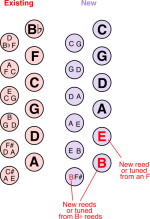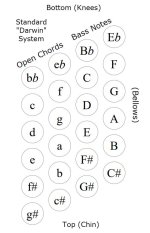A question... supposing I had the 'F' bass reed from a 12-bass accordion, is it likely it could be tuned down to 'E', or is that too much of a change? Similarly, if I had a B♭ chord reed, could it be tuned up to a B? I'm just wondering, as after watching a video by @Squeezebox Of Delights about disabling the thirds in a 12-bass, I started thinking how when rebuilding I could re-jig the whole thing to have CGDAEB as the 6 rows by re-arranging the reeds and tuning a couple and be able to play all my folk tunes



